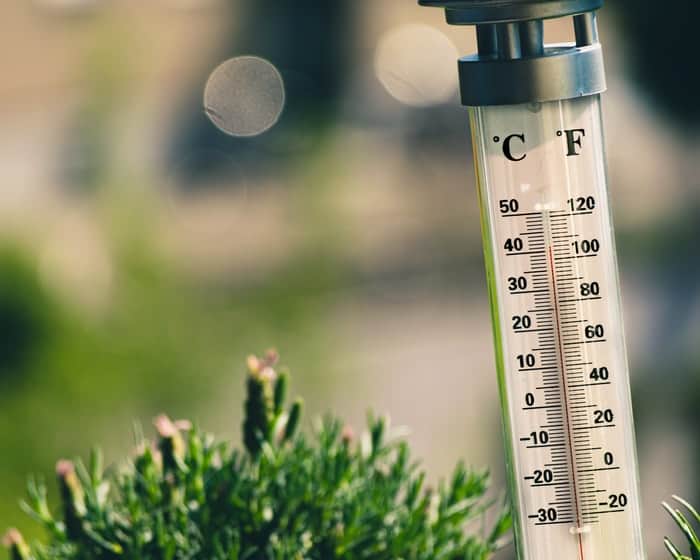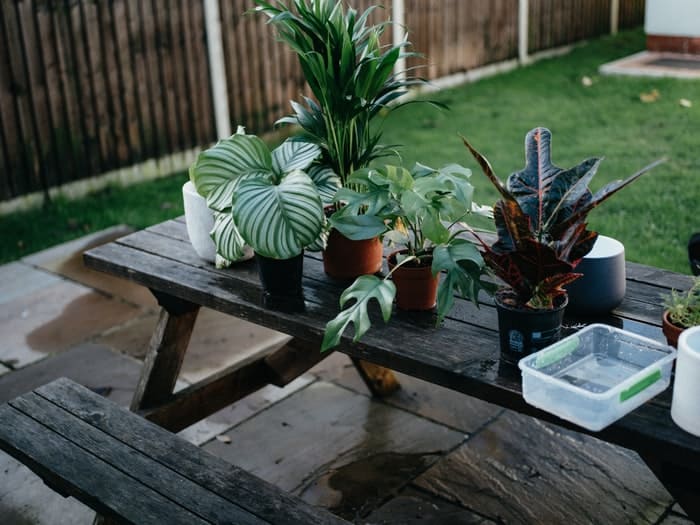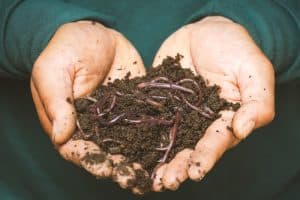Temperature is important for plants because it helps them regulate their water intake. If the temperature is too hot or too cold, the plant will not be able to take up water and will eventually die. Temperature also affects the plant’s ability to produce food. If the temperature is too high, the plant will produce less food; if the temperature is too low, the plant will not be able to produce any food at all.

What Are the Ideal Temperatures for Different Types of Plants?
Different plants thrive in different temperatures. For example, tropical plants like bananas need a lot of warmth and humidity, while cacti can tolerate much drier conditions. Here is a guide to the ideal temperatures for some common types of houseplants:
Ferns
One common houseplant is the fern. Ferns prefer cooler temperatures, between 50 and 70 degrees Fahrenheit. They like high humidity, so you may need to mist them occasionally. Place your fern in a bright spot but not in direct sunlight. Water when the top of the soil feels dry to the touch. Feed your fern with a liquid houseplant food every two weeks during spring and summer.
Succulents
Succulents are in the cactus family and have adapted to live in dry climates. In fact, succulents grow best in warm environments, between 60 and 85 degrees Fahrenheit. They can be used as houseplants, but should be kept out of direct sunlight.
Succulents need well-drained soil and should only be watered when the soil is dry to the touch. Fertilizing succulents is not necessary if they are kept in a pot with good drainage.
Palm Plants
Palm plants are tropical plants that prefer warm temperatures and high humidity. They can be grown as houseplants in the United States, but they will not tolerate cold weather.
When grown as houseplants, palm plants need bright light and should be placed near a sunny window. They also need to be watered regularly and should be fertilized every month or two with a balanced plant food.
Foliage Plants
Foliage plants are a great way to improve the appearance of your home, and they’re also easy to care for. Most foliage plants prefer temperatures between 65 and 80 degrees Fahrenheit, but there are a few that can tolerate lower or higher temperatures. Be sure to research the specific needs of the plants you choose, as this will help you keep them healthy and looking great.
Trailing & Climbing Plants
Houseplants add life to any room and can improve air quality, but not all plants are created equal. Some, like trailing plants, prefer low light and cooler temperatures, while others, like climbing plants, need more light and thrive in warmer temperatures.
Trailing plants are perfect for adding life to a room with limited space. These plants grow long vines that can be trained to drape over ledges or hang from baskets. They prefer cool temperatures and low light levels, making them ideal for growing indoors. Some popular trailing plants include pothos, philodendron, and English ivy.
Climbing plants are perfect for adding color and interest to a room with high ceilings or bare walls. These plants grow tall vines that can be trained to climb up a trellis or other support structure.
Bulbous Type Plants
Bulbous type plants prefer moderate temperatures and high humidity. They can be tricky to care for, but with the right conditions they will thrive.
Most bulbous type plants come from tropical climates, so they need warm temperatures and high humidity to grow well. They will not do well in cold or dry environments. Try to keep your bulbous type plants in a room where the temperature stays between 65 and 80 degrees Fahrenheit.
You can also increase the humidity around your plants by placing them on a tray of wet pebbles or by using a humidifier. Be sure to water your plants regularly, but don’t overwater them. Bulbous type plants don’t like wet feet.

How Cold Can a Plant Tolerate Before It Is Damaged?
Houseplants, like people, have different tolerances for temperature extremes. Some plants can tolerate cold weather down to 10 degrees Fahrenheit, while others may only be able to handle temperatures of 50 degrees Fahrenheit or higher. It is important to remember that just because a plant can tolerate a lower temperature does not mean it should be subjected to those conditions. Most plants will start to show signs of damage at temperatures below their tolerance range, such as browning leaves or wilting.
What Should You Do if Your Plants Are Getting Too Cold?
If you’re noticing that your houseplants are starting to droop or turn brown, even though you’ve been diligently watering them and providing them with ample light, it may be that they’re getting too cold. Most houseplants prefer a temperature range of 65-75 degrees Fahrenheit, so if your home falls below that range for an extended period of time, your plants will suffer.
The good news is that there are a few things you can do to help your plants adjust to colder temperatures. One is to move them closer to a window or door so they can get more natural light and warmth. You can also try using a space heater to warm up the area where your plants are located. Just be sure not to overheat the room and cook your plants in the process!
How to Care for Houseplants in the Winter
Houseplants are a great way to brighten up any room, but they can be difficult to care for during the winter. Here are a few tips for keeping your plants healthy and happy during the colder months.
Keep Them in A Bright Place
Houseplants can be a great addition to any home, but they can be a little more challenging to care for in the winter. One of the most important things to remember is to keep them in a bright place. Make sure they are getting plenty of natural light, or if that’s not possible, use a grow light.
Water Them Sparingly
Another thing to keep in mind is water. In the winter, houseplants tend to need less water than they do during other times of the year. You don’t want them to become too dry, but you also don’t want them to become waterlogged. Monitor the soil and water when needed.
Don’t Let Them Freeze
It’s that time of year again when the temperature starts to drop and we have to worry about our plants. Most people know not to leave their plants outside when it’s cold, but many don’t realize that the same thing can happen to them if they’re not brought inside.
Houseplants need warm, sunny spots where they will not be exposed to cold drafts or freezing temperatures. If you have any potted plants, bring them inside and put them in a warm spot near a window. Make sure they’re not too close to the window though, or they may get too hot and dry out.
Fertilize Them Occasionally
In the colder months, it’s important to give your houseplants a little extra care. One way to do this is by fertilizing them occasionally. Fertilizer will help keep your plants healthy and looking their best.
Conclusion
In conclusion, it is important to be mindful of the temperature in your home when caring for houseplants. While most plants can tolerate cooler temperatures, there is a temperature below which they will not be able to thrive. To ensure your plants are healthy and happy, be sure to keep your home’s temperature within the range that is best for them.









